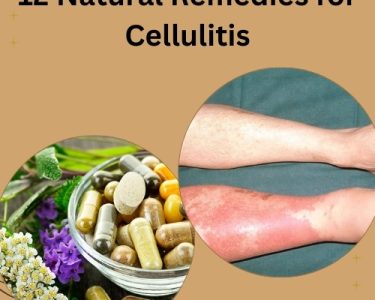Cellulitis is a painful and fast-spreading bacterial skin infection that many people first notice only after redness, swelling, and discomfort begin to intensify. For those seeking a more natural, supportive, and holistic approach to healing, understanding how essential oils and cellulitis treatments work together is an important step. Many individuals who encounter early inflammation begin searching for guidance through resources like cellulitis eye treatment guide, hoping to identify signs before the condition worsens. Combining medical treatment with natural remedies can be a powerful supportive strategy when done correctly and safely.
This comprehensive guide explains how essential oils work, their limitations, their benefits, and how they may be safely combined with standard cellulitis therapies to create a powerful, supportive natural strategy.
Understanding Cellulitis: Why Treatment Must Be Immediate
Cellulitis is typically caused by bacteria—most commonly Streptococcus or Staphylococcus—entering the deeper layers of the skin. During the early stages, some people find it helpful to learn more through guides that discuss cellulitis treatment, symptoms and causes of infection, giving them a clearer picture of how the condition develops and why the body reacts so strongly.
Common symptoms include:
- Red, warm, swollen skin
- Pain or tenderness in the affected area
- Fever or chills
- Rapidly expanding rash or redness
- Skin tightness or glossy appearance
- Fatigue
Medical attention is always required for suspected cellulitis. Essential oils cannot replace antibiotics or urgent care, but when used alongside proper treatment, they may provide helpful support for comfort, inflammation, and overall skin wellness.
Why People Combine Natural Oils and Medical Care
Many individuals use essential oils to complement traditional therapy—not to replace it. Essential oils can support the skin’s environment, ease discomfort, and encourage a sense of wellness during recovery. When patients are exploring holistic options such as cellulitis herbal treatment, they often want to understand which essential oils may help and how to use them safely.
Essential oils can be a powerful addition to wellness routines when used correctly, but safety and proper dilution are essential. Let’s explore how essential oils interact with traditional cellulitis care.
How Essential Oils Support Cellulitis Treatment
While antibiotics eliminate the infection itself, essential oils can help soothe the skin’s surface, support inflammation reduction, and maintain the skin barrier. Some people explore natural remedies for cellulitis as they search for soothing options that complement prescribed antibiotics, especially when symptoms include swelling, redness, and heat. Below are the key ways essential oils may complement cellulitis care.
Supporting the Skin’s Natural Defense Barrier
Before infection occurs, healthy skin plays a major role in keeping bacteria out. Some essential oils may help maintain skin hygiene and prevent dryness, cracking, or irritation—all of which increase infection risk.
Essential oils that support surface-level skin health include:
- Lavender
- Chamomile
- Frankincense
- Helichrysum
These oils should never be applied to open wounds or serious infections but can be used to maintain general skin wellness, making them helpful for prevention and recovery support.
Reducing Surface Irritation and Discomfort
Cellulitis can cause burning, tightness, and irritation around the affected area. Essential oils such as lavender or chamomile may help soothe these sensations when properly diluted.
They can help:
- Calm skin
- Ease dryness or tightness
- Support relaxation
- Promote sleep during recovery
This comfort-focused role is one of the main reasons people explore essential oils during cellulitis healing.
Creating a Calming, Healing Environment
Essential oils impact more than the skin—they also influence mood. Cellulitis can be stressful, especially when it spreads quickly or becomes painful. Aromatherapy oils like bergamot, lavender, and ylang-ylang help calm the nervous system.
A calm environment supports healing by reducing stress hormones that can interfere with the immune system’s efficiency.
Tea Tree Oil: The Most Discussed Essential Oil in Cellulitis Care
One of the most frequently searched combinations is tea tree oil and cellulitis, and it’s easy to understand why. Tea tree oil has an impressive reputation in natural skincare due to its cleansing and protective properties.
Why Tea Tree Oil Is Popular in Skin Support
Tea tree oil is known for helping with:
- Skin discomfort
- Areas needing extra cleanliness
- Minimizing surface irritation
- Supporting the skin’s natural defenses
However, it must always be:
- Diluted (never applied directly to the skin)
- Kept away from open infections
- Used only as part of supportive care, not as a cure
Though helpful, it cannot and should not replace antibiotic treatment. Many people use tea tree oil in a diluted blend around—not on—the affected area to support surrounding skin.
How to Use Essential Oils Safely with Cellulitis
Essential oils are powerful plant extracts, so safety must always come first. Below are the top guidelines for supporting cellulitis care with essential oils.
Always Consult a Doctor First
If cellulitis symptoms appear, medical care is non-negotiable. Essential oils can only be added after treatment begins or once your healthcare provider approves them for supportive use.
Never Apply Essential Oils on Open, Infected, or Severely Inflamed Skin
Essential oils must be used only on intact skin and never on the infected zone itself.
Safe areas for use include:
- Skin surrounding the redness
- Unaffected skin nearby
- The body (for relaxation via aromatherapy)
Direct application on active cellulitis is unsafe.
Always Dilute Essential Oils
A safe dilution ratio is:
- 1–2 drops essential oil per teaspoon of carrier oil
Carrier oils like coconut, jojoba, or almond oil prevent irritation and help distribute the essential oil evenly.
Patch Test Before Use
Even diluted essential oils may irritate some people. Test on a small area of skin first and wait 24 hours to ensure no reaction occurs.
Avoid Essential Oils If You’re Allergic or Sensitive
If you’ve reacted to fragrances, botanicals, or skincare oils before, consult a professional before using them.
Essential Oils That May Help Support Cellulitis Recovery
Although essential oils are not cures, several can support the healing environment during cellulitis treatment. Here are the most commonly used options.
Lavender Oil
Lavender is one of the most well-tolerated oils and offers calming and skin-soothing benefits. It may help reduce tension in the skin surrounding the infected area and promote rest during recovery.
Chamomile Oil
Chamomile supports skin comfort and may be helpful for irritation. Its gentle nature makes it a popular choice for sensitive skin.
Frankincense Oil
Frankincense may help support the skin’s natural regeneration and maintain a healthy-looking surface during recovery.
Eucalyptus Oil
Some people use eucalyptus aromatherapy for respiratory comfort and general immune support. While not applied to cellulitis skin, it can help create a calming environment during illness.
Tea Tree Oil
As discussed earlier, tea tree oil and cellulitis are frequently researched together. When used safely and properly diluted, tea tree oil may support the skin’s surrounding areas and maintain surface cleanliness.
Best Ways to Use Essential Oils as Part of a Supportive Cellulitis Care Routine
Here are the safest and most effective ways to incorporate essential oils alongside medical treatment.
Aromatherapy Diffusion
Using a diffuser allows essential oils to support relaxation without touching the skin. Lavender, chamomile, eucalyptus, and frankincense are common choices.
Diluted Topical Application Around (Not On) the Affected Area
Applying essential oils to nearby, unaffected skin can support comfort and skin condition.
Recommended oils:
- Lavender
- Chamomile
- Frankincense
- Tea tree (diluted heavily)
Warm Compress with Essential Oils (Indirect Use)
A compress can help soothe tension and discomfort around the infected area—never on the cellulitis itself.
Hydrating Carrier Oils for Surrounding Skin
Carrier oils help maintain the skin’s barrier and prevent dryness, which reduces future infection risk.
Options include:
- Coconut oil
- Jojoba oil
- Sweet almond oil
Essential oils can be added to these carriers for extra benefits.
Precautions: When Not to Use Essential Oils
While supportive, essential oils are not appropriate in every situation. Avoid using them if:
- You have broken or blistered skin
- You are using prescription topical medications in the same area
- You have a history of allergic reactions to plants or fragrances
- The cellulitis is spreading rapidly
- You’re pregnant or breastfeeding (consult a professional)
When used wisely, essential oils can be an excellent addition to a holistic wellness routine.
Combining Essential Oils with Traditional Cellulitis Treatments
Now that we understand the benefits and limitations, let’s explore how essential oils and standard medical treatments can work together.
Antibiotics Treat the Infection, Oils Support Comfort
Medical therapy eliminates the bacteria causing cellulitis. Essential oils help with:
- Relaxation
- Skin comfort
- Maintaining surrounding skin health
- Reducing stress during healing
Essential Oils Enhance Skin Maintenance After Recovery
Once cellulitis is treated, essential oils help keep the skin moisturized, strong, and resistant to future irritation.
Essential Oils Support Overall Well-Being
Healing from cellulitis takes time. Essential oils can support mood, rest, and reduced tension—key factors in recovery.
Can Essential Oils Prevent Cellulitis?
They cannot prevent it alone, but they can help maintain a healthier skin barrier. When combined with proper hygiene and skin care, they support overall skin resilience.
Final Thoughts
When it comes to essential oils and cellulitis, balance is essential. Essential oils are powerful natural tools that can support comfort, uplift mood, and contribute to healthier skin—but they cannot replace antibiotics or medical care.
Used wisely and safely, essential oils can:
- Support the healing environment
- Maintain healthy skin
- Enhance comfort
- Reduce stress
Many individuals exploring natural wellness notice that this approach truly becomes a powerful natural solution when combined with appropriate medical treatment—not substituted for it.
As you explore your wellness options, remember that essential oils are complementary, not curative. With the right guidance, they can become a valuable part of your supportive cellulitis care plan, just as many people discover through topics like Cellulitis Herbal Treatment and other holistic resources found at the end of their healing journey.




